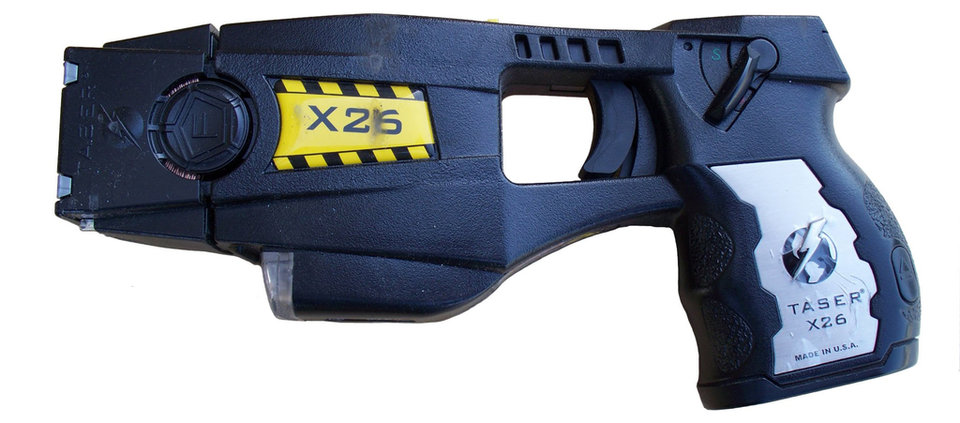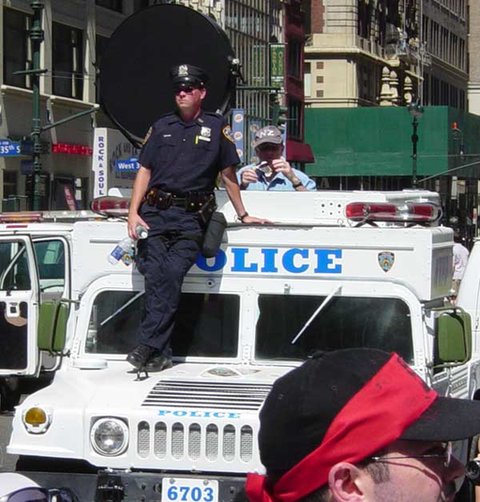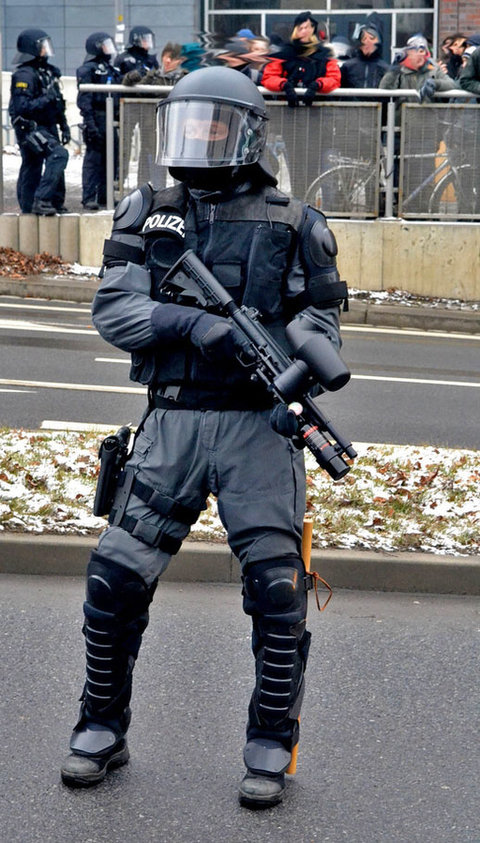Weapons
A less lethal approach to weaponry
A Defence and Security Accelerator competition is seeking proposals for technologies that safely prevent the escalation of conflict, such as kinetic energy-based systems that can distract targets at long distance. Alex Love explores the technological options and the implications for civil defence policy.
Under a Defence and Security Accelerator (DASA) competition, the UK Government is seeking proposals for new, less lethal weapon concepts that could be deployed by police and armed forces. Solutions are intended to provide forces with better options to de-escalate violence and arrest suspects without deploying firearms.
At present, UK police forces have two main types of less lethal weapons: conducted energy weapons – better known as tasers – which use 50,000V to incapacitate subjects from distances of 1.5m-4.5m, and attenuating energy projectiles, which can include rubber bullets and have a typical range of 1m-40m.
Now a DASA competition, run by the UK Home Office and Defence Science and Technology Laboratory (Dstl), is seeking proposals from industry and academia for new, less lethal weapons that can be used at ranges from 5m to 50m, with ranges of up to 70m considered.
“The government is clear that police officers should have the best possible equipment for the protection of the public and themselves when facing serious and sometimes violent situations,” said a Home Office spokesperson.
The competition's scope is broad, stipulating the need for innovative, portable technologies and techniques that can be used safely and effectively on patrols in all weather conditions, as well as against moving targets. Examples given include acoustic and chemical irritants, directed energy, drones, electrical and kinetic energy solutions.
The requirements also include that forces would have to maintain audio and visual contact with suspects, using voice communication when in closer proximity. To meet this need, combinations of technologies are encouraged.
A total of £500,000 has been allocated for the competition, which will be split across a maximum of nine submissions.
At the time of writing, the technologies submitted for consideration with a 15 October deadline had not been published. Here we take a look at some of the technologies in development, or deployed in other countries, that could meet the competition’s requirements.
Kinetic energy weapons
A number of US police forces have been experimenting with less lethal weapons to reduce gun usage.
One kinetic energy weapon used is a beanbag shotgun, which has a range of approximately 15m. Targets are hit with small beanbags at speeds of 70m a second. Police aim for the legs to knock a suspect to the ground so officers can make an arrest. Two officers are required before the weapon is deployed to ensure that live shotgun rounds aren’t accidentally used.
Denver Police use a 40mm multi-launcher with a range of around 30m. This fires a foam baton at the arms or legs of suspects at speeds up to 100mph, leaving bruises or bumps on those unfortunate enough to be hit.
Police in Los Angeles and Hendersonville, North Carolina, are using a handheld device called BolaWrap. Usable from a distance of 8m, the device fires a cord that wraps around an individual to restrain them. In October 2019, a police officer in Fresno, California, successfully used the device to stop a knife-wielding man who had stabbed two people.
Tasers: a controversial option
Tasers are already carried be many UK police forces, with officer training increasing. While tasers have proven effective in incapacitating suspects with electrical charges, they are not without controversy and have caused a number of deaths worldwide. This has not stopped deployment, however, and some parties are further developing the technology.
A longer-range taser-type weapon is one possible technology that could fit the requirements of the DASA competition.
Long-range tasers have previously been a challenge due to the wires attaching the darts to the device limiting any effective extension of the firing distance. However, Turkish company Albayraklar is confident that its wireless weapon Wattozz will challenge taser manufacturer Axon’s global dominance.
Wattozz is an electroshock gun that fires reusable projectiles at targets from approximately 10m. The charge is switched on remotely, with three power settings. Field tests have taken place in Turkey, Croatia and South Africa. Its manufacturer claims the weapon has a success rate of 80%-95%, although this has been disputed.
Meanwhile, Harkind Dynamics is developing a shotgun-style taser weapon for the US military capable of hitting a target from more than 100m. Before impact, the projectile’s speed is halved by a mini parachute opening on the round. One metre from impact, the round fires three electro-darts at the target to penetrate skin and deliver the charge. While this solution’s range would exceed DASA requirements, it is an example of a longer-distance taser in development.

// Longer range taser-type devices could be one technology that comes out of the competition.
The competition’srequested weapons range of 5m-50m, with up to 70m considered, has raised concerns.
“I'm wondering, what is the rationale for that? And if you are 70m away from someone, can you make the satisfactory judgement about whether a taser is needed?” says Dr Sophie Chambers, lecturer in criminology and criminal justice at the University of South Wales.
In addition, police need to shout a clear warning that they are about to use a taser on a subject. This could be problematic from greater distances, especially as rights will also need to be read afterwards. One possible solution is that drones are used in combination with long-range weapons to provide voice communication with suspects.
Drones are also likely to have other uses in the competition and could be deployed for surveillance in tandem with facial recognition technology.

// Sound weapons such as long-range acoustic device (LRAD) – pictured as used by New York City police – are used for crowd control.
Acoustic and chemical irritants
The DASA competition is open to acoustic weapons, which use high or low frequency sounds to disorientate targets. These are controversial, as they can damage the health and hearing of those they are used on. Given the competition’s need for technologies to be portable, a clunky long-range acoustic device (LRAD) is unlikely.
China has reportedly developed a handheld sonic weapon that uses inert gas to produce a low, repetitive noise to cause pain to a person’s brain, eardrums and eyeballs by making them vibrate. Acoustic weapons have never been used in the UK, but an LRAD was on standby during the 2012 London Olympics.
Chemical irritants are another option that DASA is open to. Many UK police already carry pepper spray, but solutions sought by the competition could include a combination of different technologies. One possible solution is a pepperball gun, which combines a kinetic energy system with a chemical irritant. It functions similarly to a paintball gun, but instead of paint, the pellets contain a powder that creates a ‘fog’ on impact that has an effect similar to pepper spray. Such systems are deployed by some forces in the US and Germany.

// Beanbag shotguns (left, in use at the 2010 Winter Olympics in Vancouver) and pepperball guns (right, used by German police at riots) are two options for less lethal weapons.
Directed energy weapons
Also on the list of potential solutions for the DASA competition is a directed energy weapon. This technology may involve the firing of lasers, microwaves or particle beams that can cause an intense burning sensation for targets fired upon.
This year, a ‘heat ray’ was reportedly considered for use in the US on protestors by military police protecting President Trump. However, it is difficult to see variants of this technology being approved for use in the UK on ethical grounds.
Provocation vs prevention
While the technologies sought by DASA are intended to de-escalate violence, some believe they could have the opposite effect.
“I couldn't imagine a single situation where any of these technologies could be employed that would de-escalate violence,” says Peter Squires, professor in criminology and public policy at the University of Brighton. “They all seem quite provocative upgrades in violence. If you start using sonic boom equipment, a water cannon or other kind of kinetics, it all ramps it up.
“I try to stick to the notion of British policing as hopefully governed by policing by consent. None of these look as if they're going any way to repair consent. They're just going to smash a hole through it.”
In order to ensure technologies are safe and effective for UK policing, they must undergo a series of rigorous scientific, technical and safety tests, along with independent medical assessments.
It should be noted that there is no guarantee that any technologies submitted to the competition will end up being used by police and if any progress into development, they will undergo strict checks.
“There is an established, stringent process in place for the approval of less lethal weapons due to the unique risks and societal implications that apply to their use,” says a Home Office spokesperson, adding that, in order to ensure technologies are safe and effective for UK policing, they must undergo a series of rigorous scientific, technical and safety tests, along with independent medical assessments.
“The government’s Defence Science and Technology Laboratory routinely considers and reviews suitable equipment, which may be a less lethal alternative to conventional firearms for the police to use in some situations,” the Home Office spokesperson adds.
Phase 1 of the competition begins in December and runs until March. Accepted technologies will be demonstrated at an event attended by government representatives and potential endusers. A venue has not yet been confirmed but it could be the Security and Policing Exhibition, scheduled for 9-11 March 2021 in Farnborough.
// Main image: UK police during a protest in London. Credit: Jonathan Harrison